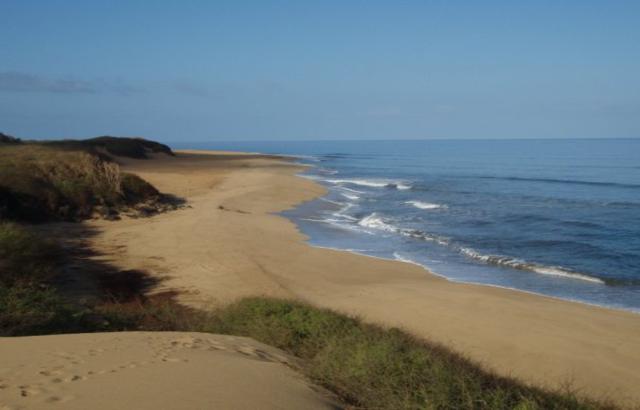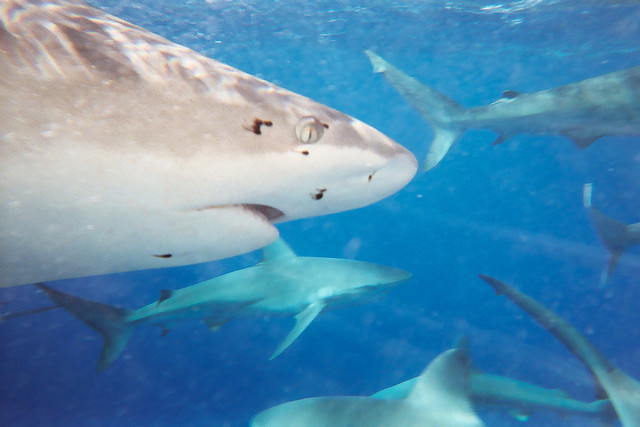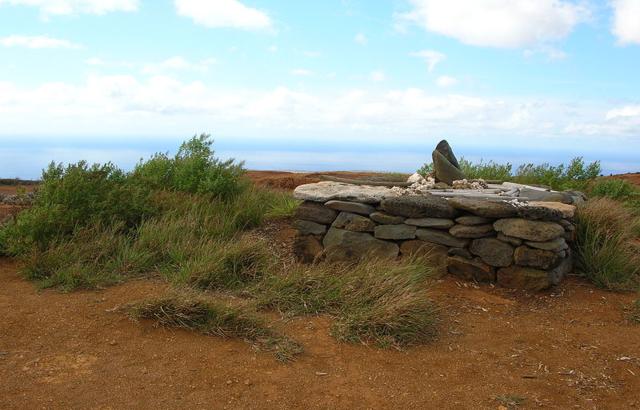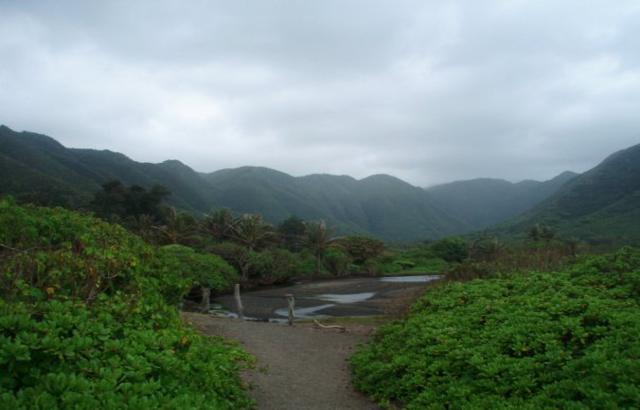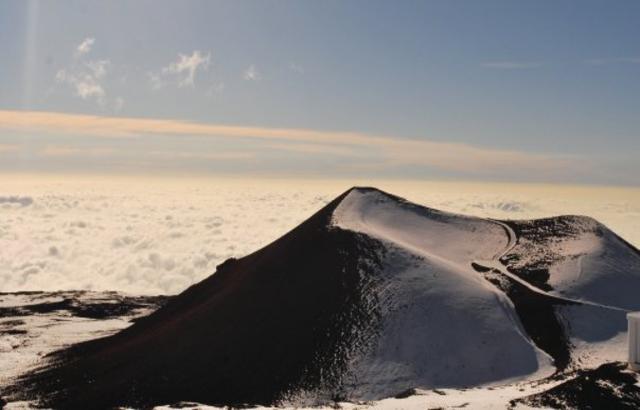When it comes to islands, everyone knows that Hawaii is near the top of the list. Wildly popular and easily accessible, it seems that almost everyone at some point has visited the Hawaiian Islands.
Yet for some, that’s exactly the problem.
In a destination that sees millions of visitors annually, how is it possible to have an experience that’s completely unique and that you—or anyone else you know—has never done before? You’ve already been to a luau, you’ve gone snorkeling, laid on the beach, been there, done that, definitely gotten the t-shirt. While some of that might sound like the perfect vacation, for the more adventure-minded traveler, there luckily is an entire other side to the Hawaiian Islands that few visitors ever take the time to explore.
Discover Maui’s “backside” on a hike through Kaupo Gap
Although thousands of visitors per year make the pilgrimage to the summit of 10,023 ft. Haleakala volcano inside of Maui’s Haleakala National Park, once the sun has crested the horizon and begun to illuminate the cinder filled valley floor below, nearly all of those visitors climb back in their rental cars and make the winding drive back down to the beach resort where they came from. A handful of hearty visitors stay in the park after the sunrise and dig their boots into the frosty cinder on the intricate network of hiking trails that line the crater floor. An even smaller percentage might even pack a tent or rent one of the three backcountry wilderness cabins that are scattered throughout the dormant volcano. Nearly everyone, however, will eventually retrace their steps and drive down the front side of the mountain on the nicely paved road they drove in on.
Unless you’re hiking out Kaupo Gap. The most recognizable valley on the island’s remote eastern backside, Kaupo Gap is Maui’s most infamous two-day hike. Hikers will make the long trip from the air-starved summit of Haleakala down to the 7,000 ft. crater floor to spend a night at Paliku campground or cabin. Unlike the dry and dusty crater rim, misty Paliku is home to native foliage and the endangered and seldom-seen nene goose—Hawaii’s state bird. Reserve a Haleakala Wilderness Cabin
Most likely waking to a shimmering layer of frost, the second day of hiking involves leaving the park boundaries and navigating a steep jungle trail that drops nearly 6,000 vertical feet to the wind battered village of Kaupo. Along the trail it’s possible to spot axis deer and mountain goat, pick sweet wild guavas, and drain your camera battery trying to capture the panoramic view of the big blue Pacific. Finishing the hike at the remote and historic Kaupo store; if you didn’t arrange a pickup from a local or a friend, you’ll have to exercise your thumb muscles for in order to catch a ride back to civilization.
>> Search airfare to Maui
[social]
Mountain bike Lana’i from summit to sea
Boasting a population of just 3,300 people, Lana’i doesn’t get as many visitors as its island neighbors. Those who do visit can usually be found in a Mediterranean-esque villa at the Four Season’s Manele Bay, or snorkeling the waters off nearby Hulopo’e Beach on a daytrip over from Maui. Sparsely developed and navigable nearly exclusively by 4×4 jeep, the island of Lana’i is an outdoor enthusiast’s ultimate playground.
Though some visitors choose to rent jeeps and explore some of the island’s hidden corners for a day, rarely does anyone choose to do it via downhill mountain bike. The best ride on the island—if not the entire state—can be found by arranging transport to the summit of 3,300 ft. Lana’ihale where the towering Cook Island pine trees and the gentle mist immediately transport you to somewhere in the Pacific Northwest. From here it’s a winding descent on the pine-scented Munro Trail until you reach the dusty turnoff for the Palawai basin and the Garden of the Gods. Known to the locals as Keahiakawelo, this other-worldly landscape of rock formations is the perfect spot for a quick reality check as to where you’re standing and how you managed to get there. While the ride has already taken you from the brisk pine forest down through the open green pastures of Ko’ele and out to the lunar landscape of Keahiakawelo, it’s hard to believe that the best is yet to come.
After a bumpy ride across the Palawai basin, a dusty plain that used to be home to the world’s largest pineapple plantation, the rock-strewn dirt road begins its final descent to Polihua Beach, a completely isolated mile-long stretch of sand that rarely has anyone else on it. The waters here aren’t safe for swimming and the winds can be fierce in the afternoon (particularly in the summer months), but it’s still possible to walk down Polihua and be the only set of footprints in the sand. Unless you feel like riding the whole thing in reverse, it’s important to arrange a Polihua pickup back in town before you start out on the ride. Ask any of the locals back in Lana’i city, and a little cash and a 12-pack will usually do the trick.
>> Check out our Lanai travel guide
Go cage diving with sharks on Oahu’s North Shore
It’s a safe bet that most visitors to the Hawaiian Islands at some point during their stay head out into a calm, protected cove for a leisurely afternoon of snorkeling and relaxation. Chasing after schools of colorful tropical reef fish and admiring the lazy elegance of the Hawaiian green sea turtle, for many, time spent above Hawaii’s reefs is the defining moment of their warm-weather vacation.
Unless, of course, they happen to see a shark. Nature’s most infamous predator, the shark is the one creature that the majority of Hawaii’s tourists have absolutely no desire to come into contact with. For a few intrepid boat operators on Oahu’s north shore, however, a close-up encounter with the toothy terrors is the entire reason for booking the trip.
Traditionally known for its world-class surf, Oahu’s north shore has recently become the center of operations for the Hawaiian Island’s cage diving scene. Departing from Haleiwa small boat harbor, charter operations such as Hawaii Shark Encounters and North Shore Shark Adventures motor three miles straight out into the big blue Pacific with the express purpose of dropping paying passengers into a swarm of schooling sharks.
Taking in the action from inside a metal cage, snorkelers and divers can cling tight to the cage as shark species ranging from the small and pesky whitetip reef shark to the gargantuan and justifiably-feared tiger shark curiously swim around and inspect the fleshy contents. There once was even an encounter with a Great White.
An activity with an obvious thrill, the shark tour operators also focus on the role of the shark in Hawaiian mythology and culture, and discuss the need for conservation due to declining global shark populations.
>> Learn more about shark diving in Hawaii
Plant trees on an uninhabited former bombing target
Of the eight major islands in the Hawaiian Island chain, there’s no island more shrouded in mystery than the island of Kaho’olawe. Uninhabited and tough to pronounce, Kaho’olawe (historically known as Kohemalama o Kanaloa) isn’t even close to being on the traditional tourist radar.
An arid, windswept island that fails to rise above 1,500 feet, Kaho’olawe for nearly half a century was used as a practice bombing target by the US military. With the end of military operations signed into law in 1990, a $400 million cleanup project was begun that aimed to clear the island of unexploded ordnance and initiate the revegetation process that continues to this day. An island of immense cultural significance, Kaho’olawe has been handed back to the State of Hawaii and operates under the stewardship of the Kaho’olawe Island Reserve Commission (KIRC), with whom volunteers are able to access the island and aid in replanting native Hawaiian dryland forest species.
The cost of volunteering on Kaho’olawe is by no means steep. A fee of $125 will cover four days of lodging and meals, though the current wait list to volunteer can potentially run as long as two years. If awarded the opportunity to volunteer on Kaho’olawe, however, it will be one of the most authentic cultural experiences available today within the United States. Aside from reforestation, volunteers also get a four day crash course in Hawaiian culture that incorporates everything from traditional rituals and chants, to farming practices, history, religion, and a deeper understanding of the political plight of the Hawaiian people.
>> Learn more about the history of Hawaii
Hike Molokai’s Halawa Valley
Yes, Moloka’i used to be home to a leprosy colony, and, no, it’s not still populated by roaming bands of lepers. With a population that hovers around 8,000 residents, the island of Moloka’i is considered to be the State’s most “Hawaiian” island, as it’s one of the few places left in Hawaii where you can still hear the Hawaiian language spoken on the street corner.
Though Moloka’i offers one of the state’s longest white sand beaches, perhaps the island’s most stunning and authentic cultural secret is found on the east end of the island in a deep green cleft in the Earth known as Halawa Valley. Considered to be the original landing site of the island’s first settlers, a handful of local families living in the valley have maintained the traditional subsistence-based lifestyle of their ancestors and continue to guard this valley closely. Hiking in Halawa Valley is strictly prohibited without a local guide, and to do so would not only be trespassing on the private property of these families, but would also exhibit a failure to show respect for the culture.
Due to these restrictions, many visitors opt not to include Halawa Valley on their Moloka’i itinerary, though in doing so miss out on one of the most pristine and cultural valleys the island has to offer. Visitors can hire a local guide from any one of the tour operators in town, and the fee paid to access the valley gets you firsthand information about the history of Halawa and a close-up look at the lives of those who continue to fish, hunt, and farm to raise their family.
Finally, once at the back of the valley, hikers are rewarded with a magical view of 250 ft. Moaula Falls, one of the most remote and inaccessible waterfalls in the entire Hawaiian Island chain.
>> Read about the waterfalls of Hawaii
Snowboard or ski Mauna Kea on the Big Island
That’s right. Snow. In Hawaii. Not just a few rare flurries at the highest elevations, but multiple feet of the white stuff that you can actually take a board or skis to.
Topping out at 13,796 ft. above sea level, the summit of Mauna Kea volcano—which literally translates to “White Mountain” in Hawaiian—is higher than the majority of North American ski runs. Never mind that it’s only a two hour drive down to golden sandy beaches and warm winter waves, diehard locals and a few intrepid visitors annually take to the frigid slopes of Mauna Kea’s summit for a full day of boarding fresh island powder.
There are no ski lifts or groomed runs on Mauna Kea’s cinder cones, although there is a 4×4 road that winds its way amongst the snowdrifts to some of the world’s best astronomical observatories on the mountain’s summit. If you’re planning on taking to the slopes on Mauna Kea you had better bring a friend with you, as you’re going to have to take turns driving each other back to the summit.
While the best season for snow sports on Mauna Kea is usually from January through March, massive dumps of snowfall have been known to occur during any month of the year, including July. On certain, rare occasions, the snow conditions have been good enough to hold various contests, including the Mauna Kea Snowboarding Championships.
Understand that while the novelty factor of snowboarding in the middle of the Pacific is remarkably high, there are a number of dangers that are intrinsic to snowboarding the mountain. Altitude sickness is a common problem for people ascending nearly 14,000 ft. from sea level, and lacking any soft vegetation beneath the base, run-ins with bare lava rock can unfortunately be common. Finally, given the altitude, winds at the summit are frequently gusting up to 100mph, making calm days at the summit a rarity—although definitely not one to missed if all the conditions align.
Because, after all, who has ever snowboarded in Hawaii? Not many people have that t-shirt.
>> Read more about the Big Island
Ready to go? Find flights to Hawaii, check out our Hawaii travel guide, or read more about travel in Hawaii:
- 10 Reasons to Visit Hawaii Now
- 10 Things to Do in Hawaii with Kids
- How to Find WWOOFing Opportunities in Hawaii
- Hawaii for Lovers

